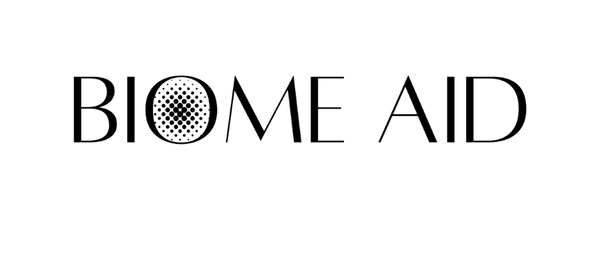Does your skin blush before you do? If the smallest thing like heat, stress, or your favorite moisturizer leaves you red and reactive, it’s not all in your head. It’s your skin trying to tell you something.
I remember when my skin completely changed in my mid-thirties, right after having my twins. I was exhausted, nutrient-depleted, and didn’t realize my hormones were shifting too. Looking back, it was probably the beginning of perimenopause, and no one was really talking about it.
My skin wasn’t breaking out or burning. It was just dry, tight, and constantly thirsty. No matter how much moisturizer I used, nothing helped. I kept layering on “medical-grade” products, thinking I was helping, but my barrier was already depleted and too stressed to repair itself.
That realization changed everything. You cannot treat what is inflamed. You have to calm it first.
Why Sensitive Skin Happens (Even in Your 30s and 40s)
Hormonal changes, barrier damage, and overuse of strong ingredients can create the perfect storm for sensitivity.
As estrogen levels shift, your skin produces less oil and moisture, so it becomes drier, thinner, and more reactive. Products you have used for years can suddenly sting or cause redness. It is not that your skin is failing; it is just more vulnerable.
Estrogen helps keep your barrier strong, your collagen supported, and your skin hydrated. When it dips, irritants sneak in more easily and your skin takes longer to recover.
If you are curious about how estrogen compares to retinol in supporting skin health, read my blog:
The Anti-Aging Debate: Estrogen vs Retinol
Sensitive Skin vs. Rosacea: What’s the Difference?
When your skin reacts to everything, it is easy to wonder if it is rosacea or just sensitivity.
Sensitive skin is not a condition; it is a signal that your barrier needs repair. Rosacea is a chronic inflammatory condition, but both share one thing in common: inflammation.
When your barrier is compromised, even gentle products can sting or burn, mimicking a rosacea flare. Whether you have sensitivity, rosacea tendencies, or both, the first step is always the same: soothe first, repair second, treat last.
Once your skin feels calm and stable again, everything else, from your moisturizer to your actives, starts to work better.
Calm the Fire: Everyday Anti-Inflammatory Habits
Rosacea is an inflammatory condition at its core, so the goal is not just topical care. It is calming your whole system. These daily habits help reduce redness and reactivity from the inside out:
1. Cool, not cold. Wash your face with lukewarm water. Extreme temperatures can trigger flare-ups.
2. Simplify your shelf. For now, keep it to three steps: cleanse, mist, moisturize. Less really is more.
3. Eat your omegas. Focus on anti-inflammatory omega-3 fatty acids from wild salmon, sardines, anchovies, or a high-quality fish-oil supplement. These support your barrier lipids and help visibly calm redness.
4. Limit inflammatory foods. Sugar, alcohol, and spicy foods can dilate blood vessels and worsen flushing. Notice what triggers your skin and adjust gently.
5. Stress less. Rosacea is tightly connected to your nervous system. Try deep breathing or short mindfulness breaks. Calming your body calms your skin.
6. Prioritize sleep. Poor sleep increases cortisol and histamine, two major redness triggers. Create a bedtime ritual that feels nurturing.
7. Support detox pathways. Antioxidants like vitamin C with bioflavonoids, zinc picolinate, and gentle liver-supportive nutrients such as NAC or glutathione help lower internal inflammation.
How to Calm, Rebuild, Hydrate, and Protect
Instead of chasing results, think of your routine as creating an environment where your skin can heal. Every product and habit should support calm and restoration.
Step 1: Calm
Start each routine with a hypochlorous acid mist such as Biome Aid’s Purifying Hypochlorous Mist. HOCl is anti-inflammatory, antibacterial, and barrier-friendly. It helps reduce redness while supporting your skin’s natural microbiome.
How to use: After cleansing, mist HOCl and let it absorb for about 30 seconds before moving on.
Step 2: Rebuild
Once your skin feels calm and hydrated, you can slowly reintroduce gentle repair ingredients.
Azelaic acid can be helpful for redness and texture, but not everyone with rosacea can tolerate it. Start low, go slow, and listen to your skin.
If it is still reactive, stay focused on hydration and protection until it feels more stable.
Step 3: Hydrate
As hormones fluctuate, your skin’s ability to hold onto moisture weakens. The goal is not to just add moisture but to rebuild your barrier so it can keep it.
Use a moisturizer rich in ceramides, glycerin, and fatty acids to mimic what your skin naturally loses.
If you feel dry or tight, finish with a thin layer of petrolatum, tallow balm, or a gentle recovery cream to seal everything in.
Try this: COSRX Ceramide Skin Barrier Moisturizer for balanced hydration and barrier support.
Step 4: Protect
Always finish with a mineral-only sunscreen that calms and protects.
Try this: La Roche-Posay Anthelios Mineral One SPF 50+.
It contains 100 percent mineral filters (zinc oxide and titanium dioxide) to shield against UVA and UVB rays without irritating sensitive skin. The tinted version helps even out tone if your skin tends to flush easily. Always apply after your moisturizer so it sits comfortably on your barrier.
The Healing Routine
Healing rosacea-prone skin is not about adding more products. It is about creating the right environment for your skin to repair itself.
When you focus on calming inflammation, restoring your barrier, nourishing your body with omega-3s, and protecting daily with zinc, your skin becomes stronger and more resilient.
True healing happens from the inside out and the outside in. When you calm inflammation on the surface and support balance within, your skin reflects that peace right back at you.

